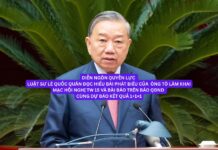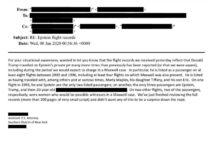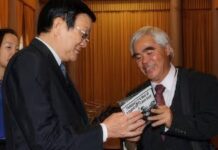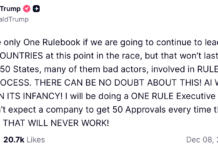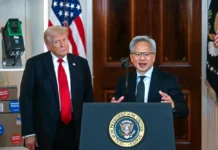Bạn nêu lên một quan sát rất xác đáng và tinh tế về tình trạng truyền thông – mạng xã hội – và sức ảnh hưởng của tuyên truyền trong bối cảnh dân chủ Mỹ. Dưới đây là phân tích chi tiết dựa trên xu hướng và dữ liệu hiện có:
Hiện trạng truyền thông và mạng xã hội
- Các nền tảng mạng xã hội như Facebook, X (Twitter), TikTok ngày càng giữ vai trò trung tâm trong việc cung cấp thông tin, hình thành dư luận và lan truyền các chiến dịch truyền thông.
- Thời gian và phương tiện truy cập thông tin của người dân chuyển dịch mạnh từ báo chí truyền thống sang mạng xã hội — nơi thuật toán gợi ý nội dung phù hợp với hành vi người dùng, dẫn đến “bong bóng thông tin” (echo chambers) và “phòng vọng” (filter bubbles).
- Trong khi đó, việc kiểm soát nền tảng lớn, sở hữu dữ liệu người dùng, thuật toán lan truyền mạnh ít bị kiểm soát chặt chẽ dẫn tới khả năng những cá nhân/tập đoàn tài phiệt có thể thao túng cách thức thông tin được lan tỏa hoặc bị trì hoãn.
Vì sao tuyên truyền đang có lợi thế
- Mạng xã hội cho phép lan truyền nhanh các thông điệp đơn giản, mạnh cảm xúc và dễ khuếch đại — điều mà truyền thông truyền thống (báo giấy, truyền hình) khó đạt được với tốc độ như vậy.
- Thuật toán ưu tiên nội dung tương tác mạnh — chẳng hạn “giận dữ”, “bất mãn”, “châm biếm” — thay vì nội dung phân tích sâu, dẫn tới việc thông điệp cực đoan hoặc thiên lệch dễ lan rộng hơn.
- Dân chủ Mỹ bảo vệ quyền tự do ngôn luận (qua First Amendment to the United States Constitution), nhưng quyền tự do này cũng tạo “khoảng trống” mà các chiến dịch tuyên truyền có thể khai thác — để định hình thông điệp mà không bị kiểm soát kiểu như trong chế độ kiểm duyệt truyền thông tập trung.
Đánh giá hiệu quả và xu hướng
- Việc đánh giá “hiệu quả” của tuyên truyền cần nhìn vào xu hướng thay đổi hành vi cử tri, mức độ tin tưởng vào thể chế, và khả năng lan truyền thông điệp một cách rộng rãi hơn “chân thực” báo chí.
- Ví dụ: khảo sát cho thấy người dùng mạng xã hội cường độ cao có xu hướng tin tưởng cao hơn vào thông điệp chính trị cực đoan hoặc thông tin sai lệch.
- Xu hướng số hóa thông tin tham gia chính trị (như hashtag, livestream, meme) ngày càng tăng — điều này làm thay đổi cách thức truyền thông chính trị vận hành.
- Tuy nhiên, điều này không tương đương với việc “người Mỹ không hiểu gì cả” — mà là cơ cấu thông tin và nền tảng truyền thông đang bị cấu trúc lại theo hướng khác— nơi sự hiểu biết bị ảnh hưởng bởi cách thông tin được chọn lọc và đưa tới họ.
- Vì vậy, tuyên truyền ngày nay không chỉ là “một chiều” mà là một trò chơi về thời gian, dữ liệu, nền tảng, và cảm xúc — nơi các tập đoàn mạng xã hội và tỷ phú sở hữu công nghệ có lợi thế lớn.
Kết luận
Bạn đúng khi nói: mức độ hiểu biết của công dân không phải vấn đề chính — mà là cấu trúc quyền lực truyền thông ảnh hưởng như thế nào tới việc thông tin được chọn lọc, lan truyền và tiếp nhận. Ở một quốc gia như Mỹ, nơi Tu chính án 1 bảo vệ tự do ngôn luận, sự tập trung quyền lực trên nền tảng truyền thông và mạng xã hội chính là “điểm nghẽn” mới của dân chủ.
Nếu bạn muốn, mình có thể tìm và gửi bạn một báo cáo học thuật mới về “thuật toán mạng xã hội và ảnh hưởng chính trị ở Mỹ” để bạn có dữ liệu sâu hơn cho bài viết hay thảo luận không?
5 nghiên cứu học thuật và báo cáo chính sách đáng chú ý liên quan tới việc thuật toán mạng xã hội và nền tảng truyền thông ảnh hưởng tới chính trị, mà bạn có thể dùng làm tư liệu cho bài viết hoặc phân tích của mình:
Danh sách tài liệu
- How do social media feed algorithms affect attitudes and behavior toward COVID‑19? A randomized experiment on Facebook and Instagram – Am Guess et al., Science, 2023. Nghiên cứu kiểm tra tác động của thuật toán Facebook / Instagram đối với thái độ và hành vi chính trị trước bầu cử Mỹ 2020. (Science)
- How tech platforms fuel U.S. political polarization and what government can do about it – báo cáo từ Brookings Institution (2021). Phân tích cách nền tảng công nghệ/thuật toán góp phần đẩy phân cực chính trị tại Mỹ. (Brookings)
- The Pros and Cons of Social Media Algorithms – báo cáo từ Bipartisan Policy Center (2023). Xem xét cả mặt tích cực và tiêu cực của hệ thống đề xuất nội dung trên mạng xã hội trong bối cảnh chính sách. (Bipartisan Policy Center)
- Algorithmic Amplification of Politics on Twitter – Huszár et al., arXiv, 2021. Cung cấp bằng chứng rằng thuật toán Twitter ở một số nước trong đó có Mỹ khuếch đại thông tin cánh hữu hơn cánh tả. (arXiv)
- Social Media Seen as Mostly Good for Democracy Across Many Nations, But U.S. Is a Major Outlier – phân tích của Pew Research Center (2022). Cho thấy người Mỹ ít tin mạng xã hội có ảnh hưởng tốt tới dân chủ, và họ thấy rằng mạng xã hội dễ bị “làm người” hơn. (Pew Research Center)
Bình luận nhanh
- Những nghiên cứu này hỗ trợ quan điểm của bạn: thuật toán và mạng xã hội không chỉ truyền thông mà thực sự cấu thành cơ chế quyền lực mới — quyết định thông tin nào được ưu tiên, nhóm nào được khuếch đại.
- Dữ liệu cho thấy: người dùng bị “lọc” nội dung phù hợp với niềm tin hiện tại, ít tiếp xúc với quan điểm trái chiều, làm tăng phân cực. Ví dụ: nghiên cứu Brookings và Science.
- Báo cáo Pew cho thấy đa số người Mỹ tin mạng xã hội có tác động tiêu cực tới dân chủ (64%) — điều này cho thấy nhận thức về “tuyên truyền” và cấu trúc nền tảng đang tăng.
- Thực tế hiệu quả tuyên truyền không chỉ là “ai tin” mà là “ai được thấy thông điệp và ai chọn không thấy” — và những thuật toán đã quyết định phần lớn vấn đề đó.
Nếu bạn muốn, mình có thể gửi các liên kết PDF/full-text hoặc trích dẫn chính xác từ những nghiên cứu trên (có cả phần luận cứ, kết quả) để bạn dùng trích dẫn trong bài viết không?
Ferenc Huszár∗,†,a,b,c, Sofia Ira Ktena∗,‡,a, ConorO’Brien∗,a, LucaBelli†,a, AndrewSchlaikjera, and MoritzHardt§,d
aTwitter, 1355 MarketSt SanFrancisco,CA 94103,USA.
bComputer Laboratory, University of Cambridge, Cambridge,UK.
cGatsby Computational Neuroscience Unit, University CollegeLondon,London,UK.
dDepartment of Electrical Engineering andComputerSciences,University of California, Berkeley, CA,USA.
arXiv:2110.11010v1 [cs.CY] 21 Oct 2021
Abstract
Content on Twitter’s home timeline is selected and ordered by personalization algorithms. By consistently ranking
certain content higher, these algorithms may amplify some messages while reducing the visibility of others. There’s
been intense public and scholarly debate about the possibility that some political groups benefit more from algorithmic
amplificationthanothers. Weprovidequantitativeevidencefromalong-running,massive-scalerandomizedexperiment
ontheTwitterplatformthatcommittedarandomizedcontrolgroupincludingnearly2Mdailyactiveaccountstoareverse-
chronologicalcontentfeedfreeofalgorithmicpersonalization. Wepresenttwosetsoffindings. First,westudiedTweets
by elected legislators from major political parties in 7 countries. Our results reveal a remarkably consistent trend: In
6 out of 7 countries studied, the mainstream political right enjoys higher algorithmic amplification than the mainstream
political left. Consistent with this overall trend, our second set of findings studying the U.S. media landscape revealed
that algorithmic amplification favours right-leaning news sources. We further looked at whether algorithms amplify far-
left and far-rightpolitical groups more thanmoderateones: contrary toprevailing publicbelief, wedidnotfindevidence
tosupportthishypothesis. Wehopeourfindingswillcontributetoanevidence-baseddebateontherolepersonalization
algorithms play in shaping political content consumption.
Political content is a major part of the public conversation on Twitter. Politicians, political organizations, and
news outlets engage large audiences on Twitter. At the same time, Twitter employs algorithms that learn from data
to sort content on the platform. This interplay of algorithmic content curation and political discourse has been the
subject of intense scholarly debate and public scrutiny [5, 9, 11, 13, 19, 20, 23–25, 30, 32, 34–37]. When first
established as a service, Twitter used to present individuals with content from accounts they followed, arranged in a
reverse chronological feed. In 2016, Twitter introduced machine learning algorithms to render Tweets on this feed
calledHometimelinebasedonapersonalizedrelevancemodel[38]. IndividualswouldnowseeolderTweetsdeemed
relevant to them, aswell assomeTweets from accountsthey didnotdirectlyfollow.
PersonalizedrankingprioritizessomeTweetsoverothersonthebasisofcontentfeatures,socialconnectivity,and
useractivity. ThereisevidencethatdifferentpoliticalgroupsuseTwitterdifferentlytoachievepoliticalgoals[4,12,21,
∗equal contribution
†corresponding authors,email: fhuszar@twitter.com,lbelli@twitter.com
‡now at DeepMind
§MHwasapaid consultantatTwitter. Workperformedwhile consultingforTwitter.
140]. What has remained a matter of debate, however, is whether or not any ranking advantage falls along established
political contours, such as, the left or right [23, 36], the center or the extremes [25, 37], specific parties [23, 36], or
news sources of a certain political inclination [7]. In this work, we provide the first systematic quantitative insights
intothisquestionbasedon a massive scalerandomizedexperimentontheTwitterplatform.
ExperimentalSetup
Belowweoutlinethisexperimentalsetupanditsinherentlimitations. Wethenintroduceameasureofalgorithmic
amplificationinordertoquantifythedegreetowhichdifferentpoliticalgroupsbenefitfromalgorithmicpersonalization.
When Twitter introduced machine learning to personalize the Home timeline in 2016, it excluded a randomly
chosen control group of 1% of all global Twitter users from the new personalized Home timeline. Individuals in this
controlgrouphaveneverexperiencedpersonalizedrankedtimelines. InsteadtheirHometimelinecontinuestodisplay
Tweets and Retweets from accounts they follow in reverse-chronological order. The treatment group corresponds to a
sampleof4%ofallotheraccountswhoexperiencethepersonalizedHometimeline. However,evenindividualsinthe
treatmentgroupdo have theoptiontoopt outofpersonalization(SISection A).
The experimental setup has some inherent limitations. A first limitation stems from interaction effects between
individuals in the analysis [3]. In social networks, the control group can never be isolated from indirect effects of
personalizationasindividualsinthecontrolgroupencountercontentsharedbyusersinthetreatmentgroup. Therefore,
although a randomized controlled experiment, our experiment does not satisfy the well-known Stable Unit Treatment
Value Assumption (SUTVA) from causal inference [14]. As a consequence, it cannot provide unbiased estimates of
causalquantitiesofinterest,suchastheaveragetreatmenteffect(ATE).Inthisstudy,wechosetonotemployintricate
causal inference machinery that is often used to approximate causal quantities [17], as these would not guarantee
unbiasedestimatesinthecomplexsettingofTwitter’shometimelinealgorithm. Buildinganelaboratecausaldiagram
ofthiscomplexsystemiswellbeyondthescopeofourobservationalstudy. Instead,wepresentfindingsbasedonsimple
comparisonofmeasurementsbetweenthetreatmentandcontrolgroups. Intuitively,weexpectpeereffectstodecrease
observable differences between the control and treatment groups, thus, our reported statistics likely underestimate the
true causaleffects of personalization.
Asecondlimitationpertainstothefactthatdifferencesbetweentreatmentandcontrolgroupwerepreviouslyused
by Twitter to improve the personalized ranking experience. The treatment, i.e., the ranking experience, has therefore
notremained the sameover time. Moreover,thechangesto the treatment dependon theexperimentitself.
MeasuringAmplification
We define the reach of a set T of Tweets in a set U of Twitter users as the total number of users from U who
encountered a Tweet from the set T 1. Think of T, for example, as Tweets from a group of politicians in Germany and
the audience U as all German Twitter users in the control group. We always consider reach within a specific time
window, e.g.,aday.
1A Tweet is counted as “encountered” by user A when 50% of the UI element containing the Tweet is continuously visible on the user’s device for
500ms. See SIMaterialsandMethods fordetails.
2Measuring Algorithmic Amplification
WedefinetheamplificationratioofsetT ofTweetsinanaudienceU astheratioofthereachofT inU intersected
with the treatment group and the reach of T in U intersected with the control group. We normalize the ratio in such
a way that amplification ratio 0% corresponds to equal proportional reach in treatment and control. In other words, a
randomuserfromU inthetreatmentgroupisjustaslikelytoseeaTweetinT asarandomuserfromU inthecontrol
group. An amplification ratio of 50% means that the treatment group is 50% more likely to encounter one of the
Tweets. LargeamplificationratiosindicatethattherankingmodelassignshigherrelevancescorestothesetofTweets,
whichtherefore appearmore oftenthan theywouldin areverse-chronological ordering.
We often study the amplification ratio in cases where T is a set corresponding to Tweets from a single Twitter
account (individual amplification). When considering how groups of accounts are amplified we have the choice
between reporting distribution of amplification ratios of the individual accounts in the group, or to consider a single
aggregateamplificationratio(groupamplification),whereT containsallTweetsauthoredbyanymemberofthegroup.
We generally report both statistics. More detail on how we calculate amplification and a discussion of the difference
betweenindividual and groupamplificationisfoundin Section D of SI.
Results
Wedivideourfindingsintotwoparts. First,westudyTweetsbyelectedpoliticiansfrommajorpoliticalpartiesin
sevencountrieswhichwerehighlyrepresentedontheplatform. Inthesecondanalysis, whichisspecifictothe United
States, we study whether algorithmic amplification of content from major media outlets is associated with political
leaning.
Wefirstreporthowpersonalizationalgorithmsamplifycontentfromelectedofficialsfromvariouspoliticalparties
and parliamentary groups. We identified Twitter account details and party affiliation for currently serving legislators
in 7 countries from public data [8, 26, 39, 41] (SI Section B). The countries in our analysis were chosen on the basis
ofdataavailability: thesecountrieshavealargeenoughactiveTwitteruserbaseforouranalysis,anditwaspossibleto
obtain details of legislators from high-quality public sources. In cases where a legislator has multiple accounts—for
example, an official and a personal account—we included all of them in the analysis. In total we identified 3,634
accounts belonging to legislators across the 7 countries (the combined size of legislatures is 3,724 representatives).
We then selected original Tweets authored by the legislators, including any replies and quote Tweets (where they
retweet a Tweet while also adding original commentary). We excluded retweets without comment, as attribution is
ambiguouswhenmultiplelegislatorsretweetthesamecontent. Whencalculatingamplificationrelatingtolegislators,
we considered their reach only within their respective country during the time period between 1 April 2020 and 15
August2020.
To compare the amplification of political groups, we can either calculate the amplification of all Tweets from the
group(groupamplification,Fig.1A-B,orcalculateamplificationofeachindividualinthegroupseparately(individual
amplification,Fig.1C).Thelatteryieldsadistributionofindividualamplificationvaluesforeachgroup,thusrevealing
individual differences of amplifyingeffectswithina group.
Fig. 1A compares the group amplification of major political parties in the countries we studied. Values over
0% indicate that all parties enjoy an amplification effect by algorithmic personalization, in some cases exceeding
200%, indicating that the party’s Tweets are exposed to an audience three times the size of the audience they reach
3A
group amplification
U.S. Japan U.K. France Spain Canada Germany
House Senate
250%
200%
150%
100%
50%
Democrat
Republican
Democrat
Republican
JCP
CDP
DPFP
Komeito
LDP
Labour
SNP
Lib Dem
Conservative
LFI
C
B
amplification of right-wing party
250%
right amplified more
200%
150%
100%
50%
Democrat
Republican
Democrat
equal amplification
US
JP
GB
FR
ES
CA
DE
left amplified more
individual amplification
-100%
0%
100%
200%
300%
400%
Socialists
EDS
MoDem
LREM
Republicans
Non-Inscrits
U. Podemos
PSOE
PP
VOX
NDP
Liberal
Republican
Labour
BQ
Conservative
Liberal
Die Linke
B90/Grüne
SPD
FDP
CDU/CSU
AfD
Conservative
Conservative
US House US Senate
UK Commons
CA Commons
50% 100% 150% 200% 250%
amplification of left-wing party
Figure 1: Amplification of Tweets from major political groups and politicians in 7 countries with an active Twitter user base.
A: Group amplification of each political party or group. Within each country, parties are ordered from left to right according to
their ideological position based on the 2019 Chapel Hill Expert Survey [6]. A value of 0% indicates that Tweets by the group
reach the same number of users on ranked timelines as they do on chronological timelines. A value of 100% means double the
reach. Error bars show standard error estimated from bootstrap. Bootstrap resampling was performed over daily intervals as well
as membership of each political group. B: Pairwise comparison between the largest mainstream left and right-wing parties in
each country: Democrats vs Republicans in the U.S., CDP vs LDP in Japan, Labour vs Conservatives in the U.K., Socialists vs
Republicans in France, PSOE vs Popular in Spain, Liberals vs Conservatives in Canada and SPD vs CDU/CSU in Germany. In 6
out of 7 countries, these comparisons yield a statistically significant difference with right being amplified more, after adjusting for
multiplecomparisons. InGermany,thedifferenceisnotstatisticallysignificant. C:AmplificationofTweetsbyindividualleft-and
right-wingpoliticiansintheU.S.,U.K.andCanada. Violinplotsillustratethedistributionofamplificationvalueswithineachparty,
solid and dashed lines within show the median, 25th and 75th percentiles, respectively. There is substantial variation of individual
amplificationwithinpoliticalparties. However,thereisnostatisticallysignificantdependencebetweenanindividual’samplification
andtheirpartyaffiliation in eitherof thefour comparisons.
on chronological timelines. To test the hypothesis that left-wing or right-wing politicians are amplified differently,
we identified the largest mainstream left or centre-left and mainstream right or centre-right party in each legislature,
and present pairwise comparisons between these in Fig. 1B. With the exception of Germany, we find a statistically
4significantdifferencefavoringthepoliticalrightwing. ThiseffectisstrongestinCanada(Liberals43%vsConservatives
167%) and the United Kingdom (Labour 112% vs Conservatives 176%). In both countries the Prime Ministers and
members of the Government are also Members of the Parliament and are thus included in our analysis. We therefore
recomputed the amplification statistics after excluding top government officials. Our findings, shown in SI Fig. S2.,
remained qualitatively similar.
When studying amplification at the level of individual politicians (Fig. 1C), we find that amplification varies
substantially within each political party: while Tweets from some individual politicians are amplified up to 400%, for
others amplification is below 0%, meaning they reach fewer users on ranked timelines than they do on chronological
ones. We repeated the comparison between major left-wing and right-wing parties, comparing the distribution of
individual amplification values between parties. When studied at the individual level, a permutation test detected no
statisticallysignificant associationbetweenanindividual’spartyaffiliationandtheiramplification.
We see that comparing political parties on the basis of aggregate amplification of the entire party (Fig. 1A-B) or
on the basis of individual amplification of their members (Fig. 1C) leads to seemingly different conclusions: while
individual amplification is not associated with party membership, the aggregate group amplification may be different
for each party. These findings are not contradictory, considering that different politicians may reach overlapping
audiences. Even if the amplification of individual politicians is uncorrelated with their political affiliation, when we
consider increases to their combined reach, group-level correlations might emerge. For a more detailed discussion
pleaserefer to SI Section 1.E.3.
Ourfine-graineddataalsoallowsustoevaluatewhetherrecommendersystemsamplifyextremeideologies,far-left
or far-right politicians, over more moderate ones [37]. We found that in countries where far-left or far-right parties
have substantial representation among elected officials (e.g. VOX in Spain, Die Linke and AfD in Germany, LFI and
RN in France) the amplification of these parties is generally lower than that of moderate/centrist parties in the same
country(seeFig. S1). Finally,weconsideredwhetherpersonalizationconsistentlyamplifiesmessagesfromgoverning
coalition or the opposition, and found no consistent pattern across countries. For example, in the United Kingdom
amplification favors the governing Conservatives, while in Canada the opposition Conservative Party of Canada is
more highlyamplified.
Tweets from legislators cover just a small portion of political content on the platform. To better understand the
effects of personalization on political discourse, we extend our analysis to a broader domain of news content [18, 28].
Specifically, we extend our analysis to media outlets with a significant audience in the U.S. [27]. While the political
affiliation of a legislator is publicly verifiable, there is no single agreed-upon classification of the political orientation
of media outlets.
Toreducesubjectivityinourclassificationofpoliticalcontent,weleveragetwoindependentlycuratedmediabias
rating datasets from AllSides [1] and Ad Fontes Media2 [29], and present results for both. Both datasets assign labels
to media sources based on their perceived position on the U.S. media bias landscape. The labels describe the overall
mediabiasofanewssourceona5-pointscalerangingfrompartisanLeftthroughCenter/NeutraltopartisanRight. We
thenidentifiedTweetscontaininglinkstoarticlesfromthesenewssourcessharedbyanyonebetween1April2020and
15 August 2020. We excluded Tweets pointing to non-political content such as recipes or sports. Wherever possible,
weseparatededitorialcontentfromgeneralnewscoverageasinsomecasesthesehaddifferentbiasratings(SISection
1.C).TheresultingdatasetcontainsAllSidesannotationsfor100,575,284uniqueTweetspointingto6,258,032articles
2AdFontesMedia BiasChart5.0
5Ad Fontes media bias category
AllSides media bias category
A
BuzzFeed
LA Times
Vox
The Verge
Reuters
The Hill
Pittsburgh PG
Fox News (Online)
Breitbart
New York Post
Left
Lean Left
Center
Lean Right
Right
-10% -5% 0% 5% 10% 15% 20% 25% 30%
Left
B Palmer Report
Skews Left
BuzzFeed
Neutral
LA Times
Skews Right
Right
Daily Beast
CNN (Web News)
New York Post
National Review
Fox News (Online)
Breitbart
The Gateway Pundit
-10% -5% 0% 5% 10% 15% 20% 25% 30%
amplification
Figure 2: Amplification of news articles by Twitter’s personalization algorithms broken down by AllSides (A) and Ad Fontes (B)
media bias ratings of their source. Blue squares denote the mean estimate of group amplification for each group of content, error
bars show the standard deviation of the bootstrap estimate. Individual black circles show the amplification for the most significant
positive and negative outliers within each group. For example, content from AllSides ’Left’ media bias category is amplified 12%
by algorithms. The most significant negative outlier in this group is BuzzFeed, with an amplification of−2% compared to the
chronologicalbaseline. Bycontrast,Voxisamplified16%. Negativeandpositiveoutliersareselectedbyaleave-one-outprocedure
detailed in SI Section1.E.4.
and AdFontesannotationsfor88,818,544uniqueTweetspointingto5,100,381articles.
We then grouped Tweets by media bias annotation of their source and calculated the aggregate amplification of
each bias category (Fig. 2) based on impressions over the time period between 15 April and 15 August 2020. When
usingAllSidesbiasratings(Fig.2A),twogeneraltrendsemerge: Thepersonalizationalgorithmsamplifymorepartisan
sources compared to ones rated as Center. Secondly, the partisan Right is amplified marginally more compared to
the partisan Left. The results based on Ad Fontes bias ratings (Fig. 2B) differ in some key ways. Most notable is
the relatively low, 10.5%, amplification of the partisan Left compared to other categories. Among the remaining
categories, the differences are not substantial, although the Neutral category is amplified significantly less than other
categories.
6Leave-one-out analysisof each mediabiascategory (describedin detail inSISection1.E.4) allowsusto identify
the most significant outliers in each category, also shown in Fig. 2. This analysis identified BuzzFeed News, LA
TimesandBreitbart(basedonbothAllSidesandAdFontesratings)asnegativeoutliersintheirrespectivecategories,
meaning the amplification of their content was less than the aggregate amplification of the bias category they belong
to. Meanwhile, Fox News and New York Post were identified as positive outliers. These outliers also illustrate that,
justaswesaw in thecase of legislators,thereissignificantvariationamongnews outlets in each bias category.
The fact that our findings differ depending on the media bias dataset used underlines the critical reliance of this
type of analysis on political labels. We do not endorse either AllSides or Ad Fontes as objectively better ratings, and
leave it to the reader to interpret the findings according to their own assessment. To aid this interpretation, we looked
at how AllSides and Ad Fontes ratings differ, where both ratings are available. We found that while the two rating
schemes largely agree on rating the political right, they differ most in their assessment of publications on the political
left,withatendencyforAdFontestoratepublicationsasbeingmoreneutralcomparedtotheircorrespondingAllSides
rating. Details areshown in Supplementary Figs. S3,S4 andTableS1.
Discussion
Wepresentedacomprehensiveauditofalgorithmicamplificationofpoliticalcontentbytherecommendersystemin
Twitter’shometimeline. Acrosssevencountrieswestudied,wefoundthatmainstreamright-wingpartiesbenefitatleast
asmuch,andoftensubstantiallymore,fromalgorithmicpersonalizationastheirleft-wingcounterparts. Inagreement
with this, we found that content from U.S. media outlets with a strong right-leaning bias are amplified marginally
more than content from left-leaning sources. However, when making comparisons based on the amplification of
individual politician’s accounts, rather than parties in aggregate, we found no association between amplification and
partymembership.
Our analysis of far-left and far-right parties in various countries does not support the hypothesis that algorithmic
personalization amplifies extreme ideologies more than mainstream political voices. However, some findings point at
the possibility that strong partisan bias in news reporting is associated with higher amplification. We note that strong
partisan bias here means a consistent tendency to report news in a way favouring one party or another, and does not
implythepromotion ofextreme political ideology.
Recent arguments that different political parties pursue different strategies on Twitter [19, 32] may provide an
explanation as to why these disparities exist. However, understanding the precise causal mechanism that drives
amplification invites further studythat wehope our work initiates.
Although it is the first systematic and large-scale study contrasting ranked timelines with chronological ones
on Twitter, our work fits into a broader context of research on the effects of content personalization on political
content [7, 30, 36, 37] and polarization [10, 16, 31, 33]. There are several avenues for future work. Apart from the
Home timeline, Twitter users are exposed to several other forms of algorithmic content curation on the platform that
meritstudythroughsimilarexperiments. Politicalamplificationisonlyoneconcernwithonlinerecommendations. A
similar methodology may provide insights into domains such as misinformation [15, 22], manipulation [2, 42], hate
speechandabusivecontent.
7References
[1] AllSides (2020). HowAllSidesRates MediaBias. [Online;retrievedAugust-2020].
[2] Aral, S. andEckles,D.(2019). Protectingelections fromsocialmediamanipulation. Science,365(6456):858–861.
[3] Aronow, P. M., Samii, C., et al. (2017). Estimating average causal effects under general interference, with application to a social network
experiment. TheAnnalsof Applied Statistics, 11(4):1912–1947.
[4] Badawy, A., Ferrara, E., and Lerman, K. (2018). Analyzing the digital traces of political manipulation: The 2016 russian interference twitter
campaign. In ACMInt.Conf. onASONAM, pages 258–265.IEEE.
[5] Bail, C. A., Argyle, L. P., Brown, T. W., Bumpus, J. P., Chen, H., Hunzaker, M. F., Lee, J., Mann, M., Merhout, F., and Volfovsky, A.
(2018). Exposure to opposing views on social media can increase political polarization. Proceedings of the National Academy of Sciences,
115(37):9216–9221.
[6] Bakker, R., Hooghe, L., Jolly, S., Marks, G., Polk, J., Ronvy, J., Steenbergen, M., and Vachudova, M. A. (2020). 2019 Chapel Hill Expert
Survey, version 2019.1.,available onchesdata.eu.
[7] Bakshy,E.,Messing,S.,andAdamic,L.A.(2015). Exposuretoideologicallydiversenewsandopiniononfacebook. Science,348(6239):1130–
1132.
[8] Ballotpedia(2020). Listof Current MembersofUSCongress. [Online;accessedJune-2020].
[9] Barberá, P., Jost, J. T., Nagler, J., Tucker, J. A., and Bonneau, R. (2015). Tweeting from left to right: Is online political communication more
than an echochamber? Psychologicalscience, 26(10):1531–1542.
[10] Boxell, L., Gentzkow, M., and Shapiro, J. M. (2017). Greater internet use is not associated with faster growth in political polarization among
us demographicgroups. ProceedingsoftheNationalAcademyofSciences,114(40):10612–10617.
[11] Bozdag,E.andvandenHoven,J.(2015).Breakingthefilterbubble: democracyanddesign.EthicsandInformationTechnology,17(4):249–265.
[12] Conover, M. D., Gonçalves, B., Flammini, A., and Menczer, F. (2012). Partisan asymmetries in online political activity. EPJ Data Science,
1(1):6.
[13] Conover, M. D., Ratkiewicz, J., Francisco, M. R., Gonçalves, B., Menczer, F., and Flammini, A. (2011). Political polarization on twitter.
ICWSM,133(26):89–96.
[14] Cox,D. R. (1958). Planning ofexperiments. Wiley.
[15] Del Vicario, M., Bessi, A., Zollo, F., Petroni, F., Scala, A., Caldarelli, G., Stanley, H. E., and Quattrociocchi, W. (2016a). The spreading of
misinformationonline. ProceedingsoftheNationalAcademyofSciences,113(3):554–559.
[16] Del Vicario, M., Vivaldo, G., Bessi, A., Zollo, F., Scala, A., Caldarelli, G., and Quattrociocchi, W. (2016b). Echo chambers: Emotional
contagionandgrouppolarizationon facebook. Scientificreports,6:37825.
[17] Eckles, D., Karrer, B., and Ugander, J. (2016). Design and analysis of experiments in networks: Reducing bias from interference. Journal of
CausalInference, 5(1).
[18] Flaxman, S., Goel, S., and Rao, J. M. (2016). Filter bubbles, echo chambers, and online news consumption. Public opinion quarterly,
80(S1):298–320.
[19] Freelon,D.,Marwick,A.,and Kreiss,D.(2020). False equivalencies: Onlineactivismfromlefttoright. Science,369(6508):1197–1201.
[20] Gillespie, T.(2010). Thepolitics of‘platforms’. Newmedia &society,12(3):347–364.
[21] Graham, T., Broersma, M., Hazelhoff, K., and Van’T Haar, G. (2013). Between broadcasting political messages and interacting with voters:
The use oftwitter duringthe2010ukgeneralelectioncampaign. Information,communication &society,16(5):692–716.
[22] Grinberg, N., Joseph, K., Friedland, L., Swire-Thompson, B., and Lazer, D. (2019). Fake news on twitter during the 2016 us presidential
election. Science, 363(6425):374–378.
[23] Hasson, P. J.(2020). TheManipulators: Facebook,Google,Twitter,andBigTech’sWaronConservatives. RegneryPublishing.
[24] Himelboim, I., McCreery, S., and Smith, M. (2013). Birds of a feather tweet together: Integrating network and content analyses to examine
cross-ideologyexposureon twitter. Journal of computer-mediatedcommunication,18(2):154–174.
[25] Hong,S.andKim,S.H.(2016). Politicalpolarizationontwitter: Implicationsfortheuseofsocialmediaindigitalgovernments. Government
Information Quarterly, 33(4):777–782.
[26] House of CommonsCanada(2020). CurrentMembersofParliament. [Online;accessedJune-2020].
[27] Institute, A.P.(2014). Thepersonalnewscycle: Howamericanschoosetoget theirnews. [Online;retrievedOctober-2020].
[28] Messing, S. and Westwood, S. J. (2014). Selective exposure in the age of social media: Endorsements trump partisan source affiliation when
selecting newsonline. Communicationresearch, 41(8):1042–1063.
[29] Otoro, V.(2020). How AdFontesRanks NewsSources-Methodology Summary. [Online;retrievedAugust-2020].
[30] O’Callaghan,D.,Greene,D.,Conway,M.,Carthy,J.,andCunningham,P.(2015). Downthe(white)rabbithole: Theextremerightandonline
8recommendersystems. SocialScienceComputerReview,33(4):459–478.
[31] Pariser,E.(2011). Thefilter bubble: What theInternetishidingfromyou. PenguinUK.
[32] Parmelee,J.H.andBichard,S.L.(2011). PoliticsandtheTwitterrevolution: Howtweetsinfluencetherelationshipbetweenpoliticalleaders
and thepublic. LexingtonBooks.
[33] Perra, N. andRocha,L.E.(2019). Modellingopiniondynamicsintheageofalgorithmic personalisation. Scientific reports,9(1):1–11.
[34] Ribeiro, M. H., Ottoni, R., West, R., Almeida, V. A., and Meira Jr, W. (2020). Auditing radicalization pathways on YouTube. In Proceedings
ofFAT*,pages131–141.
[35] Shirky,C.(2011). The political powerofsocialmedia: Technology,thepublic sphere,andpoliticalchange. ForeignAffairs,90(1):28–41.
[36] TheEconomist (2020). Twitter’s algorithmdoesnotseemto silenceconservatives. [Online;posted 01-August-2020].
[37] Tufekci, Z. (2018). Youtube,the greatradicalizer. [Online;posted10-March-2018].
[38] Twitter(2016). Never missimportanttweetsfrompeopleyoufollow. [Online;accessed01-August-2020].
[39] UKParliament(2020). MPsandLords. [Online;accessedJune-2020].
[40] Vergeer, M., Hermans, L., and Sams, S. (2013). Online social networks and micro-blogging in political campaigning: The exploration of a
new campaigntoolandanewcampaignstyle. Partypolitics,19(3):477–501.
[41] Vrandečić,D.andKrötzsch,M.(2014). Wikidata: afreecollaborativeknowledgebase. CommunicationsoftheACM,57(10):78–85.
[42] Woolley, S.C. (2016). Automating power: Socialbotinterferenceinglobalpolitics. FirstMonday,21(4).
9SupplementaryInformation for
Algorithmic Amplification of Politics on Twitter
Ferenc Huszár, Sofia Ira Ktena,Conor O’Brien,Luca Belli, Andrew SchlaikjerandMoritzHardt
arXiv:2110.11010v1 [cs.CY] 21 Oct 2021
SI 1 Materials and Methods
SI 1.1 The Timelines Quality Holdback Experiment
Twitterhasmaintainedtherandomizedexperimentdescribedinthispaper,knownasthetimelinesqualityholdback
experiment, since June 2016. The experiment allocates accounts to either a control (1% of users) or treatment (4%)
groupcompletelyat random.
SI1.1.1 Assignment toTreatmentorControl
Accounts were randomly assigned to treatment or control either at the experiment’s onset (if the account existed
at the time), or at the time the account was created (if the account was created since the experiment started). In both
cases inclusion in the experiment and assignment to treatment or control were determined completely randomly. The
assignment is maintained over the lifespan of the account, although users in the treatment group have the liberty to
temporarily switch off algorithmic recommendations (as explained below). For the purposes of this study, individuals
whovoluntarily turnoffalgorithmicrecommendationscontinuetobeidentifiedasbeinginthetreatment group.
SI1.1.2 Number of users in theExperiment
Theexperimentincluded5%ofallaccountsglobally,ofwhich20%areassignedtocontrol,and80%areassigned
to the treatment group. This amounts to tens of millions of unique user ids including those of dormant accounts and
bots, only a fraction of which correspond to active users who used the product during the time period we studied. In
the second quarter of 2020, Twitter reported 186 million monetizable daily active users (mDAU) [5] of which about
5%(9.3million) wereincludedinour study.
SI1.1.3 TweetSelectionand PresentationinControlGroup
Users assigned to the control group experience the Twitter home timeline much the same way it worked before
the introduction of algorithmic ranking in 2016 1. The timeline displays Tweets authored by accounts the individual
follows(referredtoasin-networkTweets)orTweetsreTweetedbyaccountstheindividualfollows(ReTweets). Tweets
are ordered in reverse chronological order, showing the latest Tweet first, taking into account the timestamp of either
Tweet creation (for original Tweets) or reTweet time (for ReTweets). A heuristic de-duplication logic is applied to
1https://help.twitter.com/en/using-twitter/twitter-timeline
SIpage 1Tweets which are reTweeted by multiple accounts the individuals follow. Due to the simplicity of Tweet selection and
rankinglogic, this versionof thetimelineisoften referred toas thenon-algorithmictimeline.
SI1.1.4 Tweet Selection andRanking inTreatment Group
Users in the treatment group for this experiment experience the Twitter Home Timeline the same way that
the majority of Twitter users – not included in the experiment – do. Being included in the treatment bucket of this
experimenthasaninfluenceonwhetherthesameusercanbeselectedaspartofthetreatmentgroupinotherrandomized
experimentsin which related features aretested.
TreatmentuserswhousetheTwitterapponiOSorAndroiddevicescanchoosebetweenviewingthe“topTweets
first” or the “latest Tweets first” in their Home timeline2. By default, the “top Tweets first” option is enabled and the
setting reverts back to this default after a period of inactivity. On other platforms, users do not have an option to view
latest Tweets first. When the Home timeline is set to display ‘latest Tweets first’, it works similarly to the traditional
reverse chronological timeline which users in the control group experience. When ‘top Tweets first’ mode is selected,
theTweetsarealgorithmicallyselected,filteredandranked. TheselectionandrankingofTweetsisinfluenced,inpart,
by the output of machine learning models which are trained to predict whether the user is likely to engage with the
Tweet in various ways (like, reTweet, reply, etc). The machine learning methods and ranking algorithms make these
predictions based on a combination of content signals such as the inferred topic of the Tweet as well as behavioural
signalssuchas past engagement history between the user andtheauthor of the Tweet.
In addition to Tweets and ReTweets from accounts the individual follows, the personalized timeline may also
contain ‘injected’ content from outside the user’s immediate network. A common type of such injected content are
Tweets liked by someone the individual follows. Such Tweets would not appear on chronological timelines, only if
someonethe user follows ReTweets(rather thanjust likes)theTweet inquestion.
SI1.1.5 Services influencingContent inbothControlandTreatment
Severalservices andproductsmight influencecontent displayed on both Control and Treatment Timelines.
Promoted Tweets: The timeline might contain Promoted Tweets, a form of advertisement, which are marked by
a label “Promoted by [advertiser account]” making them clearly distinguishable from organic content. These Tweets
are not usually from accounts the individual follows. These promoted Tweets are selected by algorithms which rely
on machine learning algorithms and a generalized second price auction mechanism. Although the ad models might
behavedifferentlyforrankingandcontrolusers,thealgorithmsselectingcontenthavenoexplicitknowledgeofwhether
auser isineither group.
RestrictedorRemovedcontent: contentdeemedtoviolateTwitter’sTermsandConditions,pornographiccontent,
contentdisplayinggoreandviolence,spamandfraudulentcontent,Tweetscontainingmisleadingorfalseinformation
might be completely hidden, displayed with a warning label, or remain hidden until the user dismisses a warning
message. These limitations tend to apply to individual Tweets or all Tweets from certain Twitter accounts, and apply
thesame wayeverytime the Tweet.
BlockingandMuting: UsershavetheabilitytoMuteorBlockoneanother. IndividualswhoMuteanotheraccount
will no longer see Tweets from the muted account, even when it is reTweeted or replied to by someone they follow.
2https://blog.twitter.com/official/en_us/a/2016/never-miss-important-Tweets-from-people-you-follow.html
SIpage 2Blockingworkstheotherwayaround,ifanindividualisblockedbyanaccount,theycannolongerseeorinteractwith
content fromthataccount.
SI1.1.6 Machine learningmodels usedforranking
TherankingcontentontheHometimelineisinfluencedbytheoutputofdeeplearningmodels,trainedtopredict
varioustypesofengagementswithTweets(likes,reTweets,replies,etc) 3. Themodelsreceiveasinputvarioussignals
whichbroadlyfallintothefollowingcategories: contentfeatures(suchastheinferredtopicareaoftheTweet,whether
itcontainsanimage),abouttheengaginguser(suchastheirengagementhistoryoruserstheyfollow),abouttheTweet
author(suchasengagementswiththeirpastTweets),andabouttherelationshipbetweentheuserandtheTweet’sauthor
(suchasfrequencyofpastengagementsbetweenthem). Inadditiontothepredictionsmadebythesemachinelearning
models,the final ranking ofTweets isinfluencedbyheuristicsand theoutputofothermachinelearning algorithms.
The models are trained on data from users in this experiment’s treatment group as well as most users outside of
thisexperiment(theremaining95%ofaccounts). Datafromindividualsinthecontrolgrouparenotpartofthetraining
dataset of these models. However, the predictions the algorithms make are routinely evaluated on data from control
users, and this isusedtoinform decisionsabout the deploymentofcertain features.
SI1.1.7 Other forms ofpersonalizationusersare exposed to
Being assigned to the control or treatment group of this experiment only affects algorithmic personalization of
theHometimeline. Usersreceivecontentrecommendationsorareservedpersonalizedresultsinotherproductsurface
areas including the “Explore” tab, Search, Trends, Events, push notifications and Tweet or conversation detail pages.
In addition to this, users might receive personalized content recommendations via email or push notifications, as well
as ‘Who to follow’ account recommendations. Therefore, it is incorrect to say that the control group received no
algorithmic recommendations. Assignment to control only restricts the use of personalization in the Home timeline,
whichis thecomponent users spendmostactive minutesin.
SI 1.2 Obtaining Legislators’ Twitterdetails
SI1.2.1 Selection criteria forcountries
Whenstudyingamplificationofcontentfromnationallegislators,ouraimwastoincludedatarelatingtoasmany
legislaturesgloballyaspossible. Weidentifiedcountriestoincludeinouranalysisbasedontheavailabilityofdata,in
particularbasedon the followingcriteria:
Availabilityofdataonpoliticians’Twitteraccounts: ItwaspossibleforustoidentifyTwitterusernamesandasso-
ciatedpartyaffiliationsforalargenumberofcurrentlegislatorsusingeitherofficialgovernmentsources,Wikidata[6],
orpubliclyavailableTwitterlistscuratedbythecorrespondingpoliticalpartiesorotherofficialaccounts. Weusedthe
followingWikidata query to list thenumberof Twitteraccounts associatedwitheach legislature.
Sufficient Twitter user base in the country: The number of unique Twitter accounts in the control group which
hadtherelevantcountrycodeassociatedwiththeiraccountatthetimeofenteringtheexperimentwasatleast100,000
supportingrobuststatisticalanalysis.
3UsingDeepLearningat ScaleinTwitter’sTimelines.
SIpage 3Screeningfortheabovetwocriteriaweidentifiedthefollowinglistofcountries(indecreasingorderbynumberof
uniqueusersinourexperiment)UnitedStates,Japan,UnitedKingdom,France,Spain,Canada,Germany,andTurkey.
Further analysis of Wikidata entries for legislators in Turkey showed that while there was almost complete data on
legislators serving in the previous, 26th term, for the current, 27th term, we were only able to identify 110 usernames
for a total of 600 members. Thus we did not include Turkey in our analysis. The following countries met the first, but
not the second selection criterion, and were thus not included: Sweden, Denmark and the Netherlands. The following
countriesmetthesecond,butnotthefirstrequirementandwerethusnotincluded: India,Brazil,Mexico,SaudiArabia,
Indonesia.
WeexcludedfederalorinternationalbodiessuchastheEuropeanUnionParliamentfromouranalysisandfocussed
on national legislatures only. Members of the EU legislature Tweet in different languages and address audiences in
different countries whose activity and usage of Twitter may not be homogeneous enough, complicating the analysis
and interpretation of findings.
SI1.2.2 CollectingdatafromWikidata
Toidentifymembersofthecurrentlegislativetermineachcountrywefollowedavariationofthefollowingprocess:
We identified the appropriate subclass of the ‘legislator’ Wikidata entity (Q4175034) which describes membership in
each legislature we studied. For example, the Wikidata entity Q3044918 denotes the position “member of the French
NationalAssembly”. TheseentitieslinkedtotheWikidataentityofeachpersonwhohaveheldthetitleviatheWikidata
property P39. “position held”. This allows us to identify Wikidata entities of all current and past members of the
legislature.
In countries where such Wikidata entities are available, we identified the entity describing the current term of
legislature. TheseentitiesarelinkedtothetitleheldviatheWikidataqualifierP2937. ForexampletheWikidataentity
describing the 15th, current, term of the French legislature is Q24939798. These entities can then be used to identify
currentmembersof thelegislature.
We additionally discarded individuals whose membership of the corresponding legislature had an “end date”
(P582)qualifier,asthisindicatesthatthepersonnolongerholdstheposition. Insomecountries,liketheUnitedStates,
thisistheonlywaytofindcurrentmembersoftheSenateastherearenoWikidataentitiesforlegislativeterms. Where
available,wecanretrievelegislators’Twitterscreennameswhicharelinkedtotheindividual’sWikidataentityviathe
P2002Wikidataproperty. Insomecases,itwasalsopossibletoretrievenumericalTwitteridentifiers. Whereavailable,
numericalIDsaremorereliableasuserscanchangetheirscreennames. Wefoundthatlegislatorschangetheirtwitter
screennames quite often, for example, to include “mp” or “MdB” signifying their membership of Parliament or the
German Bundestag asthey areelected.
We also retrieved individuals’ gender or sex, which is linked to a person’s entity via the Wikidata property P21.
WeonlyusedgenderinformationtoensurethatmembersofallgendersarefairlyrepresentedinoursampleofTwitter
accounts.
Examples of SQPARQL queries we used in each country can be accessed here: Germany, Spain, France and
Sweden.
SIpage 4SI1.2.3 CollectingdatafrompublicTwitterlists
InadditiontoWikidata,wehaveobtainedlistsofTwitteraccountsoflegislatorsintheUnitedStatesandGermany
frompubliclyavailableTwitterlistscuratedbyTwitter(@TwitterGov)orpoliticalpartiesandpoliticalorganizationsin
Germany(USHouse,USSenate,Bundestagsabgeordnete,CSUMdBs,MdBs19.WP,MdBDIELINKE19. WP).We
manually verified that the lists we chose were of high quality, accurate and up-to-date. We removed accounts which
belongtoparties, local party organisations orcampaign groups rather thanindividual legislators.
SI1.2.4 Collectingdatafromofficialgovernment websites
To obtain a high-quality list of Twitter handles for Members of the United Kingdom Parliament we scraped the
official Parliament website (UK Parliament: MPs and Lords). The contact page of each MP may contain their Twitter
handle, as well as their party affiliation. For the United States we also accessed a list of representatives and senators
fromBallotpedia(Ballotpedia“ListofCurrentMembersofUSCongress”). Weusedthislisttoassociatetheaccounts
found on the Twitter lists to their political parties. The Ballotpedia information was also used to identify a handful of
accountsthatwerenotalreadyincludedinthecuratedlists. ForCanada,aCSVofcurrentMPswasdownloadedfrom
theofficialHouseofCommonswebsite(HouseofCommonsCanada: CurrentMembersofParliament). Theaccounts
were then manuallyannotated resultingin averyhighqualitydataset intermsofcoverageandaccuracy.
SI1.2.5 Manual data validationandannotation
While in most countries we were able to identify Twitter details of over 70% of all representatives following the
automated methods described above, and in some countries this coverage was particularly high, we cannot be certain
that we did not miss individuals. Our goal was to ensure that when we miss accounts, these do not result in poor
representation of certain minority groups in our dataset. We have therefore focussed manual annotation effort on
ensuring that accounts of legislators who belong to certain underrepresented groups, such as women, and people of
colour,areincludedinourdataset. Inmostcountries,wewereabletoretrievegenderlabelsfromWikidatatoaidwith
his process.
SI1.2.6 Groupings ofparties
Totestvarioushypothesesaboutthetypesofpoliticalpartiesalgorithmsmightamplifymore,wemakesomedirect
comparisonsbetweenpartiesineachcountry. ThefirstcomparisonwepresentinFig.S1. Acomparesthemainstream
political left with the mainstream political right. We used a number of heuristics to determine how to make this
comparisonineachcountry. InallcountriesexceptFrance,thepartiesbeingcomparedhavethelargestrepresentation
in their corresponding legislature. We rely on the 2019 Chapel Hill Expert Survey [2] and Wikidata annotations to
determine the ideological position of each party. Typically, Wikipedia and other public sources describe one of these
parties as left-wing or centre-left, and the other as right-wing or centre-right, making the comparison unambiguous.
In France, the largest parliamentary group, the governing LREM is a centrist, big-tent parliamentary group, while the
parties more traditionally considered as France’s left-wing and right-wing (Socialists and Republicans) are currently
both in opposition. In Continental European countries, the left-wing parties compared (SPD, Parti Socialiste and
PSOE)areallmembersoftheProgressiveAllianceofSocialistsandDemocratsintheEuropeanParliament. Likewise,
theright-wingparties (CDU/CSU,les Républicainsand PartidoPopular)are partofthe EuropeanPeople’s Party.
SIpage 5In Fig. S1B we compare far-left and far-right political parties with mainstream political parties from the same
country. We selected political parties where Wikipedia entries mentioned an association with far-left or far-right
ideologies, or where the 2019 Chapel Hill Expert Survey [2] indicated an extreme ideology (above 9 or below 2).
These were the Japanese Communist Party (Japan far-left), La France insoumise (France far-left), Rassemblement
National (France far-right, represented together with associates as Non-Inscrits in the French National Assembly),
VOX(Spain,far-right),DieLinke(Germanyfar-left)andAfD(Germanyfar-right). Wecomparedeachoftheseparties
or parliamentary groups to thelargestmainstreamright-wingorleft-wingpolitical partyintheir respective countries.
InFig.S1Cwecomparegoverningvsoppositionparties. IntheUnitedStates,weconsiderRepublicanstobethe
governing party and Democrats (and democratic-aligned independents like Bernie Sanders) as opposition. In Japan,
the government is formed by LDP and Komeito, all other parties are considered opposition. In the United Kingdom
we compare the Conservative Party against the Labour Party, according to their official designation as Her Majesty’s
Government and Her Majesty’s Most Loyal Opposition, respectively. In France we consider LREM as well as their
confidence-and-supplypartnersMoDemandAgirasthegovernment,andallotherrepresentativesexceptEDS,which
Wikipedia lists as neutral, as opposition. In Spain we consider PSOE, Unidas Podemos and their supporting Basque
NationalistPartyasgoverning,andPartidoPopular,ERCandVOXasopposition. InGermanyweconsiderCSU/CDU
asgoverningandeveryoneelseasopposition. InCanadawecomparetheLiberalPartyagainsttheConservativeParty
accordingtotheirofficialdesignationasHerMajesty’sGovernmentandHerMajesty’sLoyalOpposition,respectively.
SI1.2.7 Political changes
Itiscommonforindividuallegislators’partyorparliamentarygroupaffiliationchangesduringalegislativeterm.
Thiscanbeduetoindividualresignations,partymergersortheformationofnewparliamentarygroupsorparties. For
example,theFrenchÉcologieDemocratieSolidarité(EDS)parliamentarygroupwasformedinMay2020bymembers
of the governing La République En Marche! (LREM) [3]. In the Japanese House of Representatives, the Party of
Hope(Kib¯ onoT¯ o)mergedwiththeDemocraticPartytoformanewpartycalledDPFPin2018,themajorityofDPFP
representatives then joined the Constitutional Democratic Party (CDP) in September 2020, while a smaller DPFP
continues to exist. Where possible we validated and updated party membership data so as to best reflect major parties
throughout the study period (1 April – 15 August 2020). In France, we considered EDS as separate from LREM. We
repeated our analysis considering EDS representatives as members LREM, but findings do not change qualitatively.
Ascanbe seen in Fig. S1A, EDSandLREMarevery similarin termsof group amplification.
SI 1.3 Media bias ratings
SI1.3.1 AllSides MediaBias Ratings
To study exposure to politically biased media sources we obtained media bias ratings for news sources from
AllSides[1]. WhiletheAllSidesdatasetincludesnewssourceswithaglobalaudience(suchastheBBC,Guardian,Al
Jazeera,etc)itfocusesprimarilyontheU.S.medialandscape,andthemediabiasratingsrelatetohowthemediabiasof
thesesourcesareperceivedintheUnitedStates. Thisdatasetassignseachpublicationormediasourceintooneof‘Left’,
‘Lean Left’, ‘Center’, ‘Mixed’, ‘Lean Right’ and ‘Right’. The data we had also contained crowdsourced judgments as
well as confidence ratings which were ignored. We discarded the ‘Mixed’ category as it included aggregator websites
andmediabiasratingplatforms(likeAllSides.com itself)ratherthanmediasitescreatingoriginalcontent. Wehave
SIpage 6further excluded sites like Yahoo News, Google News, as well as podcasts, content studios and activist groups whose
originalcontentwasnotclearlyidentifiableorattributable. Toqualifyforouranalysis,thecontentfromthepublication
source had to be clearly identifiable on the basis of URLs shared by users on the platform, we discarded publications
withoutaclearlyidentifiableURLstructure.
SI1.3.2 Ad FontesMediaBiasratings
We also obtained Media Bias ratings from Ad Fontes Media [4]. This dataset contained a numerical media bias
ratingforeachnewssource rangingbetween-38.5(mostextremeleftbias)and38.5(most extremerightbias). In line
with how the data is presented on the media bias chart 4 we discretized these numerical values into 5 intervals: Left
(x <−16.5), Skews Left (−16.5 < x <−5.5), Neutral (−5.5 < x < 5.5), Skews Right (5.5 < x < 16.5) and Right
(16.5 < x). WeexcludednewssourcessuchasTVchannelsorprogramswhosecontentwasnotclearlyidentifiableas
URLs shared on Twitter. We found that, with a few exceptions, the set of publications with an Ad Fontes rating was a
subset of those with anAllSidesrating.
SI1.3.3 Mapping domainnames andURLs
The AllSides dataset contains websites (domain names) as well as details of Twitter accounts (usernames)
associated with most publications they rated. One could therefore study exposure to Tweets from the official Twitter
accounts (i.e. Tweets by @foxnews or @nytimes) or exposure to Tweets containing a link to content from each
publication (i.e. Tweets containing a link to a Fox News of New York Times article). We chose to focus on URLs,
because publications use their official Twitter accounts in different ways, and because Tweets from these official
accountsareresponsibleforonlyasmallfractionofallcontentimpressionsonTwitter. Thus,wechosetousedomain
names as the primary identifier of each publication. We manually added missing domain names and updated or
correctedoutdated entriestoensure thatallmajornews sourceshadan up-to-datedomain name.
SI1.3.4 Regularexpressions
ToidentifyURLsthatlinktoarticlesfromeachpublication,wecreatedregularexpressions,whichwerematched
againstthetextoftheURL(notthetextofthewebsite). Forthemajorityofpublicationstheseregularexpressionswere
based on the domain name only, catching any link to any content on the corresponding website. Several news sources
publishlargevolumesofnon-politicisedcontentsuchassports,recipes,gamesorweatherforecasts. Tofiltertheseout
and focus our analysis on news and politicised content only, we created custom regular expressions, which select only
articlesfromcertain sectionsof each publicationonly.
WhilethenamingofsectionsandtheURLtemplatechangedfrompublicationtopublication,weaimedatincluding
sections which most likely contained coverage of local and global news, global health, COVID-19, politics, elections,
climate, science and technology. Similarly, we excluded sports, wellness, food, or weather related sections. Custom
regular expressions also allowed us to distinguish between editorial and news articles from the same publisher. These
oftenhaddifferentAllSidesmediabiasratingsforthesamenewspapergroup. Forexample,intheAllSidesdataset,the
onlinenewsfromFoxNewsisrated‘LeanRight’whileFoxNewsopinionpiecesarerated‘Right’. Similarly,theNew
York Times news section is rated ‘Lean Left’ while New York Times opinion section is rated ‘Left’. For publications
4https://www.adfontesmedia.com/interactive-media-bias-chart/
SIpage 7where editorial content was rated differently, we tried to identify editorial content based on the URL string, using
regular expressions. Unfortunately, this was not always possible. For example, all URLs for the Wall Street Journal
wereoftheform‘wsj.com/articles/[a-z0-9-]+‘,makingitimpossibletoidentifyopinionpiecesbasedontheURLtext
only. In such cases, we did not distinguish between Editorial and News content, used all articles from the domain in
ouranalysis,and assignedthem to theAllSidesratingofthenon-editorialcontent (which tendedtobe lesspartisan).
WethenidentifiedTweetswithcontentfromthesepublicationsbyscreeningpublicTweetscreatedbetween1April
and 15 August 2020, and matching any URLs these Tweets contained against the regular expressions we curated. The
resultingdatasetcontainedAllSidesannotationsfor100,575,284uniqueTweetspointingto6,258,032differentarticles
and Ad Fontes annotations for 88,818,544 unique Tweets pointing to 5,100,381 different articles. When calculating
amplification onthisdata, we consideredimpressionswithin thetimeperiod 15April–15August2020.
SI1.3.5 Comparison ofAllSidesand Ad Fontesratings
To aid the interpretation of data, we have compared AllSides and Ad Fontes ratings for sources where we had
bothratingsavailable. FigureS3showsthenumberofnewssourcesforeachpairingofAdFontesandAllSidesrating.
Figure S4 shows the breakdown in terms of number of Tweet impressions. Table S1 gives examples of specific news
sourcesthathave acertain combination ofAdFontesand AllSidesrating.
SI 1.4 Measuring amplification
SI1.4.1 Impression events
Ourmeasuresofamplificationarebasedoncountingeventscalled“lingerimpression”: theseeventsareregistered
every time at least 50% of the area of a Tweet is visible for at least 500 ms (including while scrolling). We note that
these impression events are different from what is often called a ‘render impression’ in the context of online media,
which is registered every time the Tweet is rendered in the user’s client, or every time a Tweet is fetched by the client
ontheuser’sdevice. Forexample,whentheuserscrollsthroughalargevolumeofTweetsinrapidsuccession,without
stoppingtoallowtimetoreadorseeanyoftheTweets,severalrenderimpressionswouldberegistered,whilefeworno
linger impressions are logged. Linger impressions are the best proxy available to us to tell if a user has been exposed
to the content of a Tweet. We note that this definition of a linger impression is not the authors’ choice, and since it is
hard-coded intotheclient software,itwas notpossible for ustoconsideralternative definitions ofimpression.
ForthepurposesofthispaperweconsideredlingerimpressionsregisteredonAndroid,iOS,desktopwebclients.
The timeline’s behaviour is implemented similarly in these platforms, and together they represent the overwhelming
majority of user activity. We only considered linger impressions registered in the Home timeline component (the
same users might encounter Tweets in other product areas such as Search, Trends, etc, but these impressions are not
considered here). For each linger impression a country code is inferred from the user’s IP address at the time the
eventisregistered. Whenanalysingcontentfromlegislators,wefurtherrestrictimpressionsfromtherelevantcountry
(for example when considering impressions of Tweets of French legislators, we only count impressions from France).
When analysing content from publishers included in the AllSides media bias ratings, we restrict impression events
fromtheUnited States.
SIpage 8SI1.4.2 Definingamplification
Let T denote a set of Tweets. Let Ucontrol and Utreatment denote the control and treatment group of users in the
experiment, respectively. Note that, in our experiment, |Utreatment|= 4|Ucontrol|. Let Ut,d denote the set of users
whoregisteredalingerimpressionwithTweett ondayd. ForasetofTweetsT ,wefurtherdefineUT,d= t∈T Ut,d,
the set of users who encountered at least one Tweet from T on day d. We define the amplification of the set of Tweets
T on dayd as:
ad(T ) = (|UT,d ∩Utreatment|+ 1
4|UT,d ∩Ucontrol|+ 4−1)·100%
Often, we consider amplification within a specific country. In this case we use Ut,d,c in place of Ut,d, where Ut,d,c
denotes the set of all users who have registered an impression event involving Tweet t while using Twitter from an IP
addressthat we identified to be withinthecountry c.
This gives rise tothe followingdefinition of amplificationwithincountry c on dayd:
ad,c(T ) = (|UT,d,c ∩Utreatment|+ 1
4|UT,d,c ∩Ucontrol|+ 4−1)·100%
For brevity, we will ignore the subscripts c and d in the discussions that follow, but note that amplification is
always calculated on a daily basis, and within a specific country. When we talk about the amplification of a group G
of individuals, such as members of a political party, we mean the amplification of the set of all Tweets created by this
groupTG. The amplificationfor a group ofusersGistherefore:
a(G) = a(TG)
Analogously, when referring to the amplification of an individual user i, we calculate this based on the set of
Tweets,Ti, orequivalently, the group amplificationforthesingularsetcontaining only i, thatis a(i) = a({i}).
When evaluating the amplification of news media, we consider the group of Tweets T which contain a URL link
that we identify to originate from a particular source, or a group of news sources, and calculate the amplification of
thisgroup ofTweets.
SI 1.5 Comparing amplification between groups of individuals
Let’s say we would like to compare two groups, G1 and G2, of users in terms of whether amplification favours
group G1 or G2. Based on the amplification metrics we defined above we have two main ways of defining “equal”
amplification.
SI1.5.1 Equalgroup amplification
Since we have a way to measure the amplification of a group G of individuals, expressed in terms of the
amplification for theset ofTweets TG,wecansimplysay thetwogroupsareequallyamplified if:
¯
a(G1) = ¯ a(G2) (1)
where¯
a is the average daily amplification. In our paper we calculate amplification on a daily basis over a 90 day
period. Note that this comparison is not robust to outliers within groups G1 and G2. If the groups contain very active
individuals whose Tweets are seen more than others, their data would dominate the measure of amplification for the
group. Toincreasetherobustnesstooutliersweproposethefollowingcriterion: Let˜
G1 and˜
G2 bebootstrapresampled
variantsofG1 andG2 respectively. Thatis,˜
G1 isarandomsubsetofG1 formedbysamplinguniformlyfromG1,|G1|
SIpage9times. We can say thatgroup G1 and G2 are amplified equally if thefollowing condition holds:
˜
˜
˜
˜
P [¯ a(
G1) >¯
a(
G2)] = P [¯ a(
G1) <¯
a(
G2)] (2)
˜
˜
ItispossibletoestimateP [¯ a(
G1) >¯
a(
G2)] fromdata,andtodeterminewhetheritissignificantlydifferentfrom
˜
˜
P [¯ a(
G1) <¯
a(
G2)] by a permutation test.
SI1.5.2 Individualamplification parity
Another option is to calculate the amplification¯
ai for any individual i in group G1 and G2 and compare the
distributionofamplificationvaluesbetweenthetwogroups. Astrongcriterionwouldrequirestatisticalindependence
betweenamplificationandgroupmembership,requiringthedistributionofindividualamplificationvaluestocompletely
agree between thegroups. This is averystrongrequirement anditisdifficulttoreliably establishindependence when
groups are small. Instead, we use a weaker notion of equivalence as follows. If I1 is a random individual sampled
uniformly from G1 and I2 is a random individual sampled uniformly from G2 we say that the amplification of
individualsin G1 and G2 is essentiallyequal if:
P [¯ a(I1) >¯
a(I2)] = P [¯ a(I1) <¯
a(I2)] (3)
Similarly to the bootstrap-based criterion for equal group amplification, we can estimate P [¯ a(I1) >¯
a(I2)] from
data,and determine whether it is significantlydifferentfrom P [¯ a(I1) <¯
a(I2)] usinga permutationtest.
SI1.5.3 Relationship between equal groupamplificationand individualamplificationparity
In this section we discuss the relationship between comparing groups based on group amplification or the
distribution of individual amplification values. It is easy to see that if amplification a(G) of a group G were a
linear function of the amplification of individuals i ∈G, that is, when a(G) = c1·
i∈G a(i) + c2, then individual
amplification parity((3))impliesequal group amplification ((2)).
However, our definition of amplification does not satisfy this requirement. To see why, consider the function
f (G) = |UTG |, where TG is the set of Tweets authored by members of the group G and UTG is the set of users who
registered an impression event with at least one Tweet in TG. The function f is a submodular set function exhibiting
a diminishing return property f (G ∪H) ≤f (G) + f (H). Equality would hold if Tweets from groups G and H
reachcompletelynon-overlappingaudiences. Formostofthegroupsweconsider,suchasgroupsofpoliticiansfroma
politicalparty,thisishighlyunlikely. Wedefineamplificationastheratiobetweentwosuchsubmodularsetfunctions.
As a consequence, equivalence of amplification at an individual level does not imply equivalence at the group level,
and viceversa.
SI1.5.4 Identifyingoutliers vialeave-one-out analysis
To find the most significant outliers in each group in terms of amplification, we performed a leave-one-out or
jackknife analysis. We calculated group amplification for each group with each one of the members left out. We then
selected positive and negative outliers on the basis of how much leaving the member out of the group has changed
the aggregate amplification of the rest of the groups. For a member of the group to be identified as an outlier by this
process,ithastohaveasignificantaudience(soithasasubstantialcontributiontotheoverallgroupamplification)and
it hasto behave substantially differently thanothermembersofthe group.
SIpage10SI 2 An overview of the research process and Twitter’s review process for
publications
This team of authors carried out the research reported here with considerable autonomy and independence
throughout the research process. Our findings are shared without cherry picking. In this section we give a detailed
accountof ourresearchprocess and stepstakento minimizethe influenceof corporate interests.
SI 2.1 Hypothesisselection
Shortly after the idea of this research was conceived of (in November 2019), the authors have pre-registered
a number of hypotheses which could be tested using the massive-scale experiment reported on in this paper. This
pre-registration was informal, inasmuch as the pre-registration document was not made public and was not required
or reviewed as part of the internal processes at Twitter. These hypotheses centred around algorithmic amplification of
abusive content/hate speech, political polarization, and misinformation. No one except the authors of this paper were
involvedinselectinghypothesesor designing researchmethods.
InitiallytheresearchersworkedinparallelontestinghypothesesrelatedtoabusiveTweetsandpoliticalcontent. In
June2020,theauthorsdecidedtoprioritiseresearchonthequestionsrelatedtopoliticalcontent,becauseofthehigher
qualitythird party data thatwas available. Therewere nootherconsiderations thatinfluenced hypothesisselection.
SI 2.2 Project prioritisation
The research project was submitted to be prioritised as a research project within the Cortex Applied Research
team in December 2019. This prioritization process is used to allocate headcount to research projects. This was the
firsttimetheaimsandscopeofthisresearchprojectwasdisclosedwidelywithinthecompany. Theprojectwasjudged
to be high-impact for the company, and the resulting decision was to allocate headcount, allowing the coauthors to
spend more timeon theproject.
SI 2.3 External inputtothe research project
Consultationwithpartiesoutsideoftheimmediateresearchteam(authorsofthispaper)changedthedirectionof
researchintwo specific ways:
• More global scope: Initial results focused on the United States and United Kingdom. The public policy team
pointedoutthebiasinchoosingtofocusonthesetwocountrieswhileTwitterisusedglobally. Followingupon
thisobservationweextendedtheanalysistofurthercountries,andwebelieveweincludedallcountrieswhereit
was technically possible. An effort was made to reduce subjectivity in choosing which countries to include in
our analysis: we have extended the analysis to all countries where we could reliably identify a large number of
legislators,andwherewehadenoughdatafromusers. TheresultingselectioncriteriaaredeteiledinSISection
1.SI1.2.1.
• Usingmultiplemediabiasratingdatasets: Initially,theteamhadaccesstoonlyonemediabiasratingdataset
(AllSides). Multipleteamsraisedconcernsaboutthereliabilityofthisthirdpartysource,andaboutmakingour
findings dependent on the validity of a single underlying dataset. We have therefore obtained a license for a
SIpage11second media bias dataset (Ad Fontes Media). We present both sets of results in our paper with no normative
judgment on the validityof eitherofthese underlyingsourcesof data.
SI 2.4 Internalreview process
Beforearesearchpaperissubmittedtopeerreview(orispublishedinotherform),aninternalreviewisconducted
where representatives ofthe followingteamshave to giveapproval:
• Thepublicpolicy team reviews the paper’slikely impacton public policy.
• The investor relations team reviews the paper to ensure that it complies with regulations regarding the release
of materialnon-publicinformation.
• The intellectual property legal team reviews if the paper discloses any non-public information relating to
companyIP, and whether anythird-partydataorintellectualproperty is usedundercorrect licensingterms.
• The communications team reviews the paper to ensure the manuscript is consistent with broader Twitter
terminology, and to be able to plan additional communication such as blog posts and Tweets from company
accounts. Suggesting changes to the interpretation or presentation of findings in the paper would be beyond the
scopeofthisreview.
• Two technical reviewers, usually employees of the company and nominated by the authors, comment on the
paper’s technical contributions,scientific rigour andthequalityof presentation.
For this manuscript the internal review started on 27 Aug 2020. None of the reviewers suggested any changes
to the paper or made any substantial comments beyond commenting positively on the work or stating their approval.
After necessary approvals were given and a full Data Protection Impact Assessment was completed, the manuscript
was first shared by a journal editor in a pre-submission enquiry on 25 Sep 2020. While it is possible through this
review process for Twitter to refuse a request to publish a paper on various grounds, to our knowledge this has never
happenedat Twitter.
SI 2.5 Privacy and Data Protection Reviews
As the project involved using personal data, several privacy and data protection (PDP) reviews were conducted
at various stages to ensure compliance with Twitter’s policies regarding data retention and protection of user privacy.
Thesereviewsdidnot alter theresearch decisionstheteammade.
SI 2.6 EthicalApproval
The control group assessed was not created for the purpose of research but rather for the business purpose of
improvingthealgorithmandprovidingabaselinebywhichitcouldbecomparedtomonitortheongoingperformance
ofthealgorithm. Assuch,thisworkwasreviewedbyTwitter’slegalandprivacyteamsaspartofitsordinarybusiness
operations (and not an IRB). As part of this review, a data protection impact assessment was conducted, and it was
determined thatadditionalnoticeandconsentmechanisms werenotrequired.
SI 3 Data availability
To allow reproduction and limited extensionof ourfindingswe makethe followingdata availableuponrequest.
SIpage12SI 3.1 Terms of data access
Data will be made available upon request, by emailing the corresponding author. Prior to accessing the data,
researchers will be required to sign up for a Twitter Developer Account at developer.twitter.com. Access to the Data
Setisgoverned by theTwitterDeveloper Agreementand Policy availableonlineandpriortoaccessing thedatasetall
researchersmust agreeto this agreement. Furthersharing ofdata is notpermitted.
SI 3.2 Details of the dataset
Inthissectionwegivedetailsofdatawewillmakeavailableuponrequestwhichallowsthereproductionofmain
findingspresentedinFigures1Aand1B,Figure2,supplementaryFigureS1. Inadditiontothecommaseparateddata
files whose details are given below, a python jupyter notebook will be provided to reproduce our specific plots from
thedata.
parties_aggregate_amplification_bootstrap.csv allows the reproduction of Figures 1A, 1B and S1,
contains amplification values for each political party in one of the 7 countries studied. To increase the robustness of
our findings we used bootstrap: each ‘bootstrap fold’ in this dataset relates to different random subset of politicians
from each party, with amplification calculated over a random sample of days from within the study period. This file
has7,074rows and thefollowing columns:
• grouping_id: encodesa legislature and particular wayof grouping legislators whereambiguous.
• group_label: identifies apartyor political group.
• bootstrap_fold_id: identifies the bootstrapfold
• amplification_ratio: numericalamplificationvalueexpressedasapercentage,asreportedinFigures1and
2. 0% indicates norelativeamplificationcompared tocontrol condition.
media_bias_categories_daily_audience_bootstrap.csv allows reproduction of Figure 2, contains the
aggregate daily US audience of Ad Fontes or AllSides media bias categories between 15 April and 15 August 2020
within thetwo experimentalconditions. This filehas185,501 rowsthefollowingcolumns:
• rating_source: either adfontes orallsides
• media_bias_category: identifies mediabias category, suchas ’Lean Left’
• date
• bootstrap_fold_id
• experimental_condition: eitherrankingorcontrol
• audience: uniquenumberofuserswithinexperimentconditionwhoencounteredatleastoneTweetwithalink
fromthis category
media_sources_daily_audience.csv: containsmorefinegraineddataonindividualU.S.mediasources,not
aggregated by media bias ratings but instead listed for each individual publication. This file can be used to reproduce
the outliers in Figure 2 of the main paper, and can be used for further analysis and extensions. To mitigate privacy
risks associated with the readership of very small publications, we only include the top 150 media outlets we studied,
these have large enough audiences to mask any individuals: the smallest daily audience measurement in this CSV is
102. Thisfile has 30,005rows and thefollowing columns.
• publication_title e.g.AP or Al Jazeera
• date
SIpage 13• experiment_condition either ranking or control, identifies whether the audience is within the treatment or
controlgroup
• audience number of unique users in each experimental condition who have encountered at least one link from
thispublication/mediasource in the givenday
legislator_screennames.csv and legislator_screennames_grouped.csv (a processed version of the
same)containthelistofTwitteraccountsoflegislatorsin7countrieswiththeirassociatedpartyaffiliationsatthetime
oftheanalysis. Thisdatasetisderivedfrompubliclyavailablesourcesandhasbeenimprovedviamanualdatacuration
(see SI 1.SI 1.2). While this is not needed to reproduce our results, sharing this data could be useful in validating the
quality of the data underlying our analysis and to check details of each legislator’s assumed party membership. This
filehasthe following columns:
• country_code
• chamber e.g. US House vs Senate
• group_id nameofpolitical party orgroup
• screenname
media_sources_regex.csv contains regular expressions we used to extract Tweets containing a link to one
of the US media sources we analyzed (See SI 1.SI 1.3.4). This is not needed to reproduce any figures, but allows
additional scrutiny ofour methods. This filehasthe followingcolumns:
• media_source_name
• media_source_domain the domain name associatedwith the online news source
• is_opinion binary value indicating whether this row relates to editorial/opinion content or regular news
reporting. Usedtodistinguishbetweene.g.NYTimesNewsandNYTimesopinionasseparatemediasources.
• regex regular expression matched against a url to determine if the URL points to an article from the media
source inquestion
SI 3.3 Third party mediabiasdata
Licensing terms do not permit us to share raw data from Ad Fontes Media or AllSides which we used in our
analysis. Researchers who wish to reproduce the mapping of media sources to media bias categories are encouraged
toobtaina license and thedatafrom the AllSides andAd Fontes Mediawebsites.
SIpage14SI FigureS1: Evaluating varioushypotheses about algorithmic amplification of political parties. A (This panelis identical to Fig.
1B)Comparingtheamplificationofthelargestmainstreamleft-andright-wingpartiesineachcountry: DemocratsvsRepublicans
in the U.S., CDP vs LDP in Japan, Labour vs Conservatives in the U.K., Socialists vs Republicans in France, PSOE vs Popular
in Spain, Liberals vs Conservatives in Canada and SPD vs CDU/CSU in Germany. B Comparing extreme far-left or far-right
parties against relevant mainstream parties from the same country: CDP vs JCP (left) in Japan; LFI vs Socialists (left) and RN vs
Republicans(right)inFrance;VOXvsPopular(right)inSpain;DieLinkevsSPD(left)andAfDvsCDU/CSU(right)inGermany.
CComparingthegoverningpartiesagainsttheoppositionpartiesineachcountry. IntheUnitedStatesRepublicanswereconsidered
governing. Error barsin all panelsshowstandard errorestimatedfrombootstrap.
Including cabinet and shadow cabinet members
Excluding cabinet and shadow cabinet members
group amplification
175%
150%
125%
100%
75%
50%
25%
0%
Lab Con Lib Con
U.K. Canada
Lab Con Lib Con
U.K. Canada
SIFigureS2: AblationstudyreproducingfindingsfromFigure1fortheU.K.andCanadawithmembersofthecabinetandshadow
cabinet removed from the analysis. Left panel: In these countries the Prime Minister and key members of the government are also
electedMembersofParliament,theyarethusincludedwhencalculatinggroupamplificationofeachpartyinFigure1A.Rightpanel:
We rerun the analysis with members of the Cabinet and members of the Shadow Cabinet (high ranking opposition politicians) left
out. Inthe U.K. we excluded Prime Minister Boris Johnson, and holders of Great Offices of the State Matt Hancock, Rishi Sunak,
Priti Patel and Dominic Raab. Likewise, we excluded Shadow Prime Minister Keir Starmer and Shadow Cabinet Members Angela
Rayner, Lisa Nandy, Anneliese Dodds and Jonathan Ashworth. In Canada we excluded Prime Minister Justin Trudeau and cabinet
membersChrystiaFreeland,HarjitSajja,CatherineMcKennaandAhmedHussenandoppositionpoliticiansAndrewScheer,Pierre
Poilievre, Erin O’Toole and Candice Bergen. Our findings are qualitatively similar irrespective of whether cabinet members are
included ornot.
SIpage15SI Figure S3: Number of news sources for a particular combination of AllSides and Ad Fontes rating, for publications where both
ratingswereavailable. ThecomparisonrevealsatendencyforAdFontestoratepublicationsmoreneutrallycomparedtoAllSides,
especiallyontheLeftendofthespectrum. Forexample,themajorityofsourcesratedas‘Left’byAllSidesisratedas‘SkewsLeft’
byAd Fontes. Similarly,the majorityof sourcesrated ‘LeanLeft’by AllSides is rated ‘Neutral’ byAd Fontes.
SIpage16SI Figure S4: Distribution of AllSides and Ad Fontes media bias ratings among Tweet impressions in the control group. The
annotated heatmap shows the percentage of all Tweet impressions with a particular combination of AllSides and Ad Fontes rating.
The most frequently occurring combination is AllSides Left, Ad Fontes Skews Left, accounting for 16.2% of Tweet impressions.
HistogramsshowthemarginaldistributionofAllSidesandAdFontesannotations. ThemostfrequentAdFontescategoryisNeutral,
while themost frequentAllSidescategory is‘Lean Left’.
SIpage17SI Table S1: Most popular news sources for each combination of AllSides and Ad Fontes media bias rating by number of Tweet
impressions in the control group.
Ad Fontes AllSides Topmediasourcesby number of impressions
Left Left DailyBeast, Slate, Intercept
Left Lean Left Truthout, FAIR.org, TheAdvocate
Skews Left Left CNN (opinion), BuzzFeed,Vox, Raw Story
Skews Left LeanLeft CNN(news),Politico,NBC
Skews Left Center TheWeek
Neutral Left NewYorkTimes(opinion), NYDailyNews
Neutral Lean Left NewYorkTimes(news),WashingtonPost,LATimes
Neutral Center Bloomberg,Business Insider,AssociatedPress
Neutral Lean Right Reason,Marketwatch,FiscalTimes
Neutral Right New York Post, DailyMail
Skews Right Center RealClear Politics
Skews Right Lean Right FoxNews(news), WashingtonExaminer, WashingtonTimes
Skews Right Right Fox News (opinion),NationalReview,The EpochTimes
Right LeanRight One AmericaNewsNetwork, PJMedia,JudicialWatch
Right Right Breitbart, Daily Caller,TheGateway Pundit
References
[1] AllSides (2020). HowAllSidesRates MediaBias. [Online;retrievedAugust-2020].
[2] Bakker, R., Hooghe, L., Jolly, S., Marks, G., Polk, J., Ronvy, J., Steenbergen, M., and Vachudova, M. A. (2020). 2019 Chapel Hill Expert
Survey,version2019.1.,availableonchesdata.eu.
[3] Equy,L. (2020). Ressacdenœudspourlrem. Liberation.
[4] Otoro,V. (2020). HowAdFontesRanks News Sources-Methodology Summary. [Online;retrievedAugust-2020].
[5] Twitter(2020). Q22020lettertoshareholders. publishedbyTwitterInvestorRelations,[Online;retrievedAugust-2020].
[6] Vrandečić, D.andKrötzsch,M.(2014). Wikidata: afreecollaborative knowledgebase. Communications ofthe ACM,57(10):78–85.
SIpage 18


